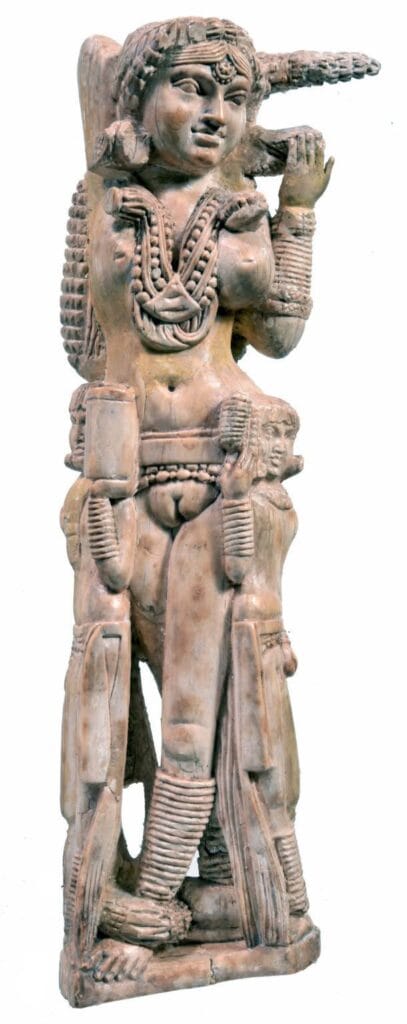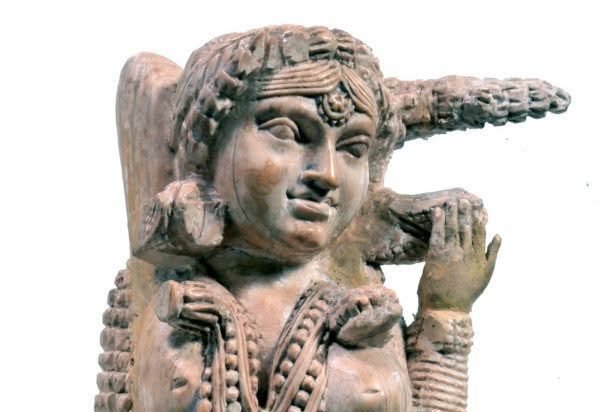In 1938, excavations in Pompeii uncovered an intricately carved ivory statuette of Indian origin, revealing a fascinating link between ancient Rome and the Indian subcontinent. Buried under volcanic ash from Mount Vesuvius’s eruption in 79 CE, Pompeii has long been a treasure trove for archaeologists, and this discovery further highlights the extensive trade networks that connected distant civilizations. The statuette, dating to the 1st century CE, was found in an affluent Pompeian home, underscoring the demand for luxury imports in the Roman world.
The carving depicts three female figures standing on a pedestal. The central figure, the most prominent, is adorned with a thick necklace, bangles, anklets, and a jeweled girdle. She strikes an elegant pose, crossing her left leg over her right, with her head slightly turned in a smiling gesture. In her left hand, she holds an unidentified object, while her right hand rests behind her head, touching her braided hair. Her elaborate headdress extends from the left side of her head in a tapered form.
Flanking the central figure are two smaller attendants, each half her size. They wear similar adornments and hold unidentified objects, possibly toiletries or jewelry. The entire composition is skillfully carved from a single piece of ivory, with remarkable balance and grace. The smaller figures enhance the elegance of the central figure, contributing to the statuette’s artistic harmony.
Notable details suggest intriguing aspects of its craftsmanship and purpose. A hole drilled from the top of the central figure’s head extends down to her navel, and a possible artist’s mark appears beneath the pedestal. Interestingly, despite the meticulous detailing, the top of the statuette remains unfinished, leaving an area uncarved.

Initially, scholars such as Amadeo Maiuri, who discovered the piece, and art historian Mirella Levi D’Ancona, speculated that the figure represented a goddess, possibly Lakshmi from Hindu tradition. However, later studies reinterpreted the iconography, identifying the central figure as a yakshi—a female fertility spirit common in early Buddhist art from sites like Bharhut and Sanchi in India. Similarities in pose, adornment, and symbolic meaning align the statuette with these Indian artistic traditions, where yakshis were associated with protection, prosperity, and good fortune.
While the yakshi imagery points to its Indian origins, its presence in a wealthy Roman household suggests it was appreciated as an exotic luxury item rather than a religious object. Ivory was highly prized in the Roman Empire, as noted by Pliny the Elder, who documented its popularity in luxury goods markets.
Today, this remarkable statuette is housed in the Museo Nazionale in Naples, serving as a testament to the rich cultural exchanges between ancient India and Rome.












